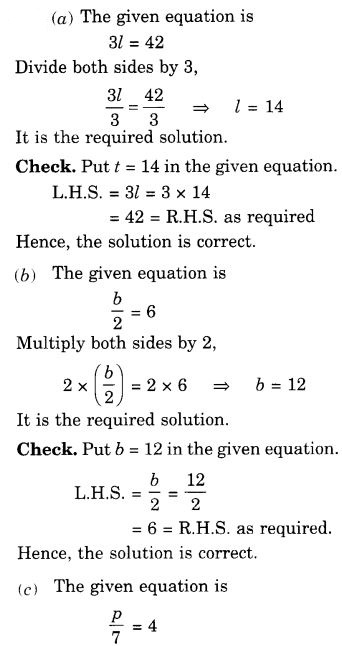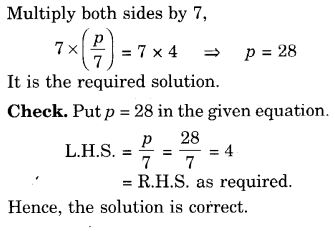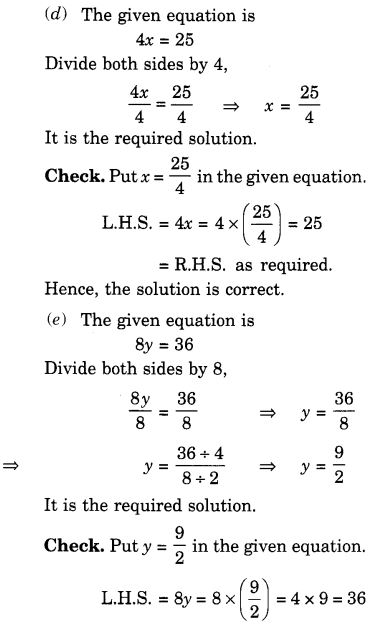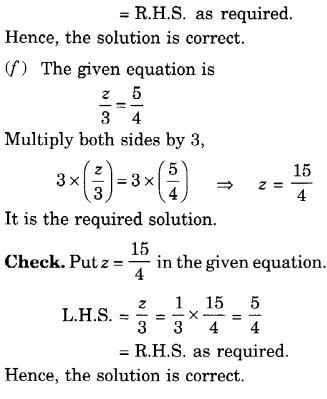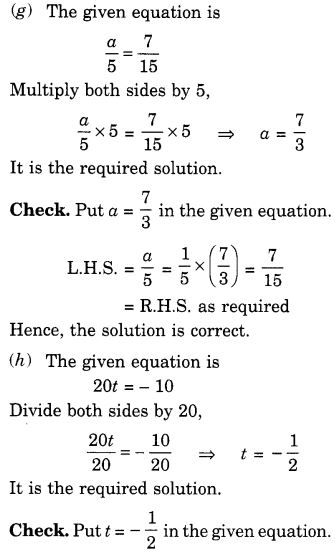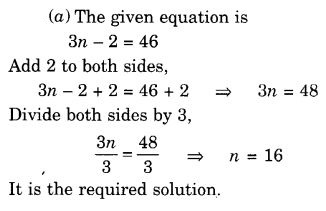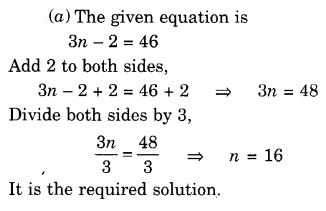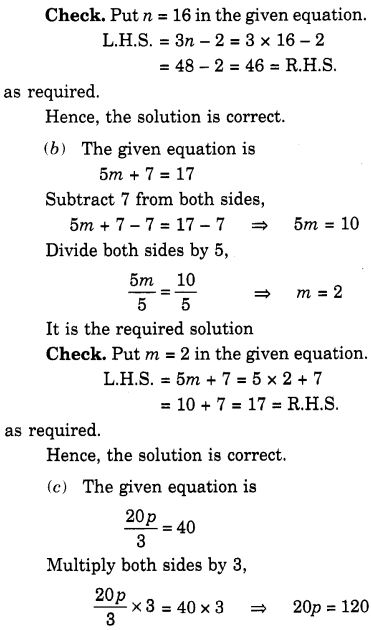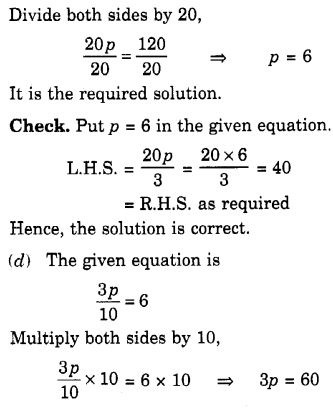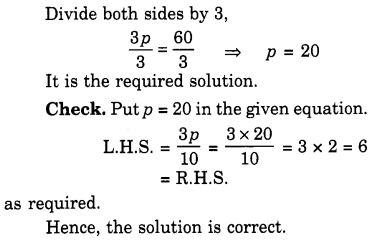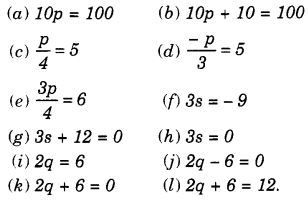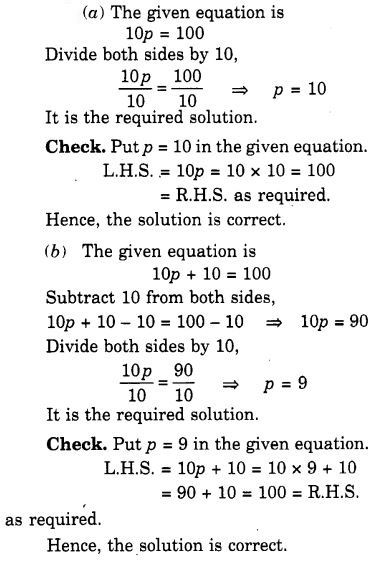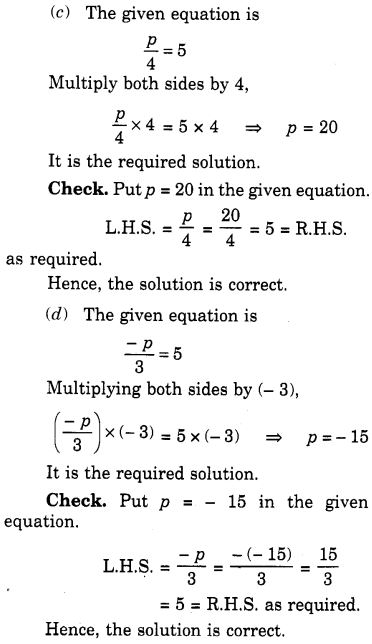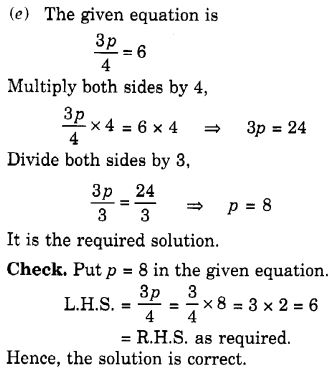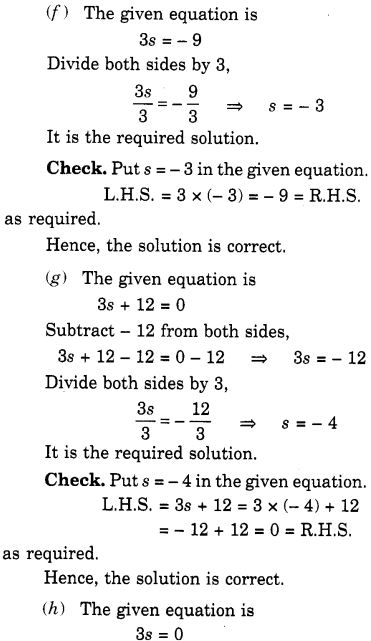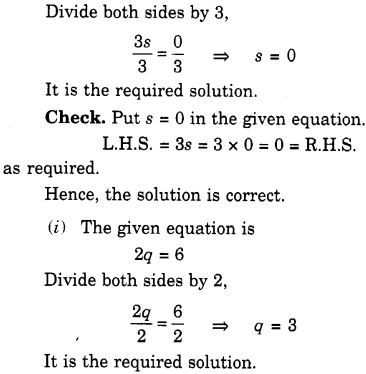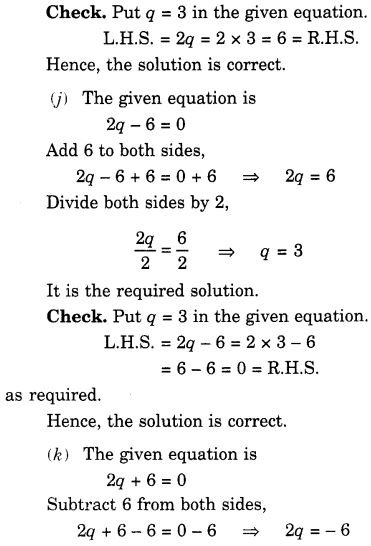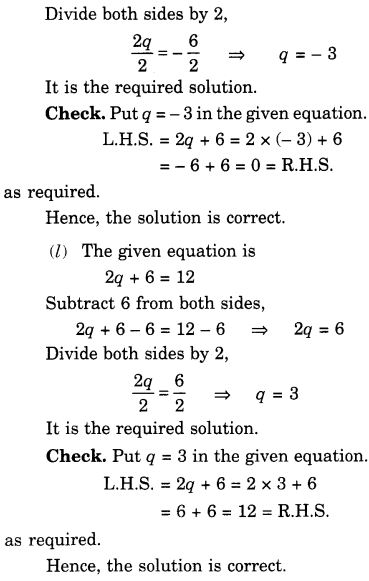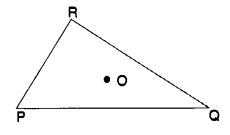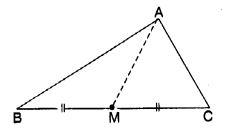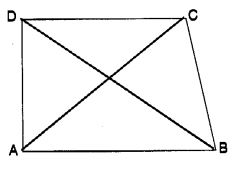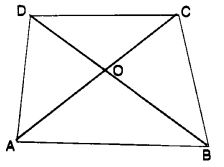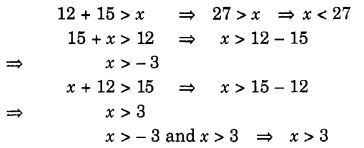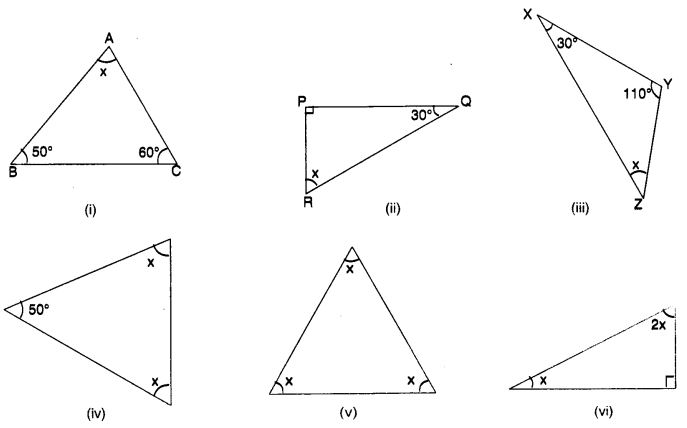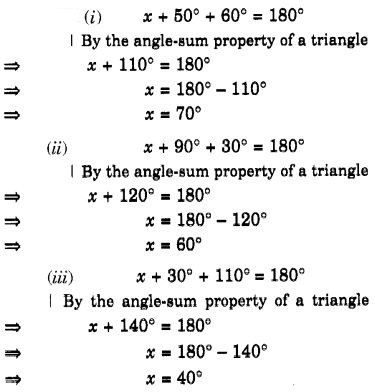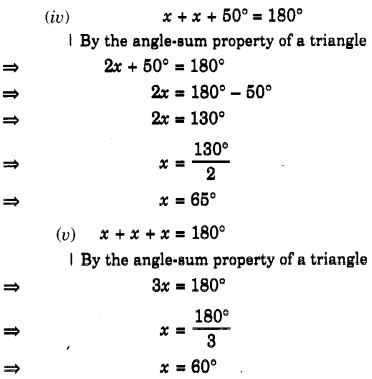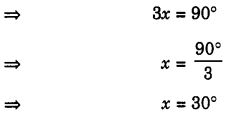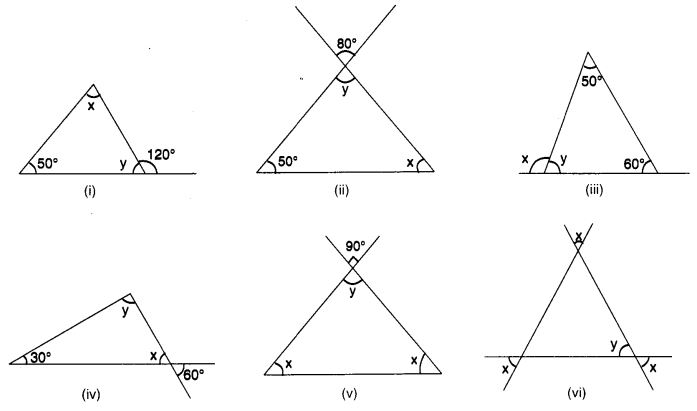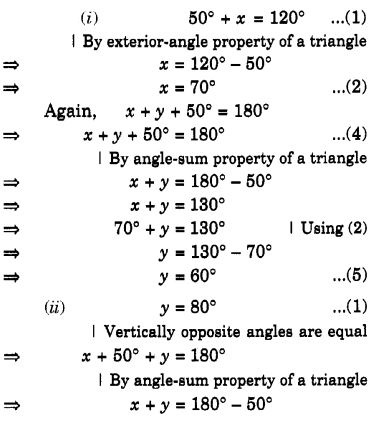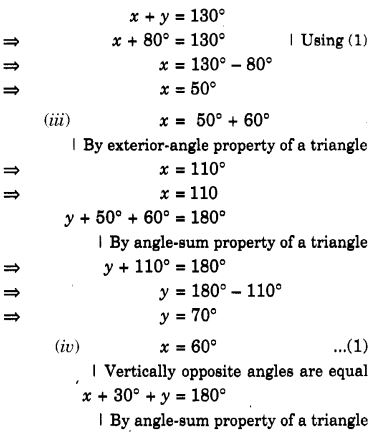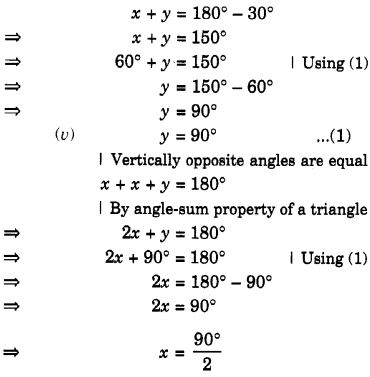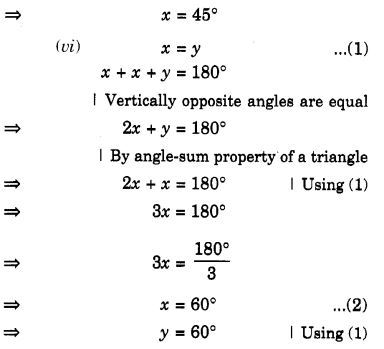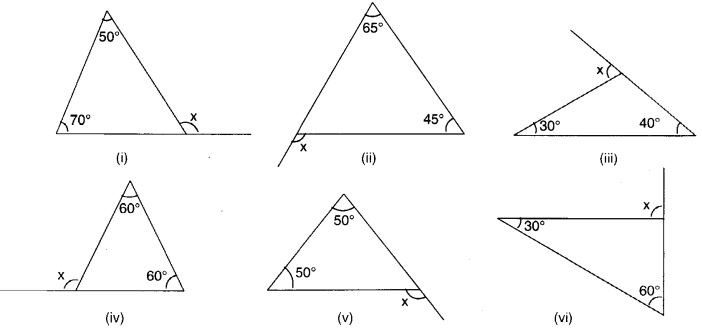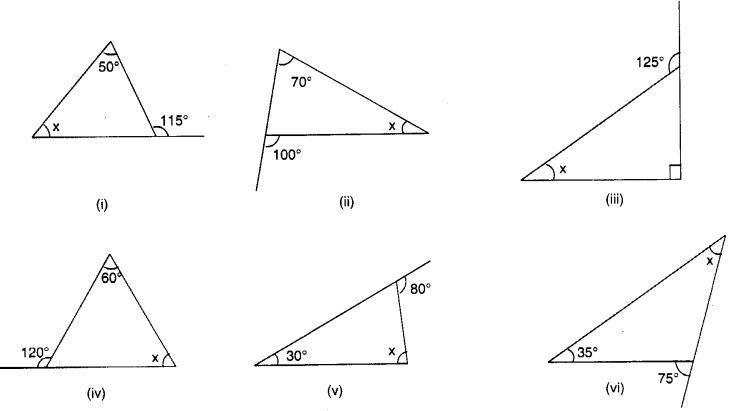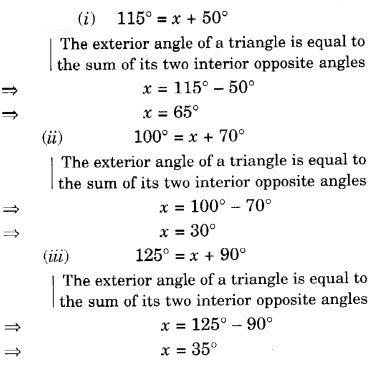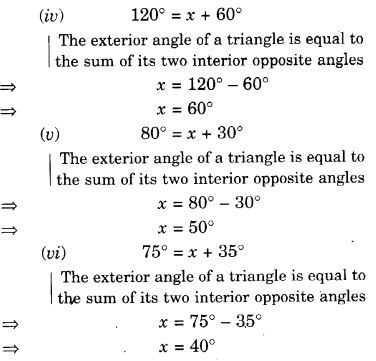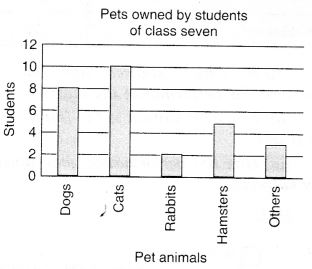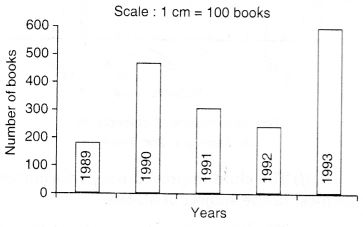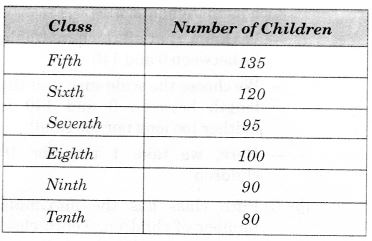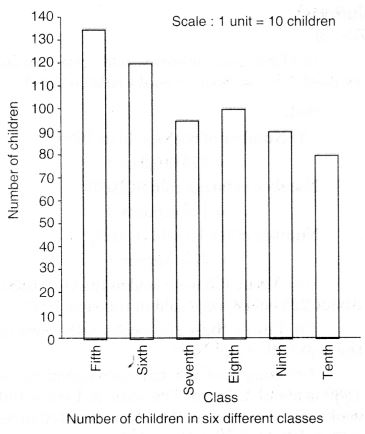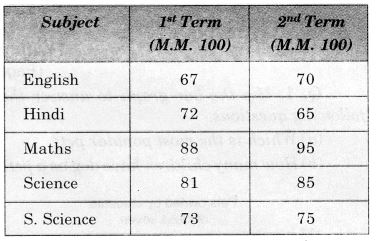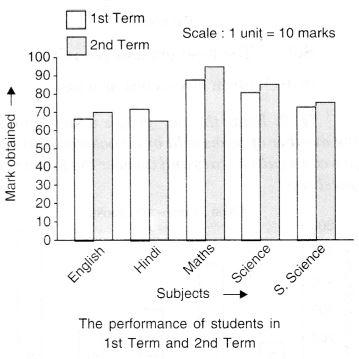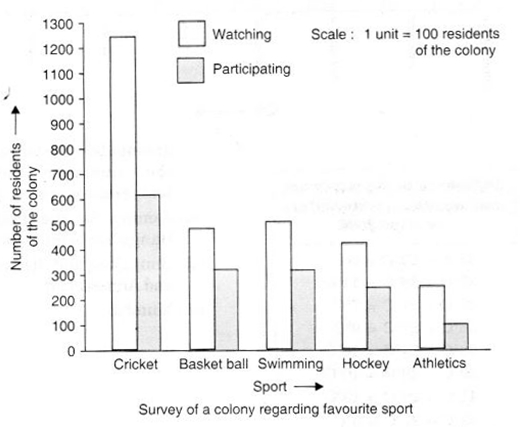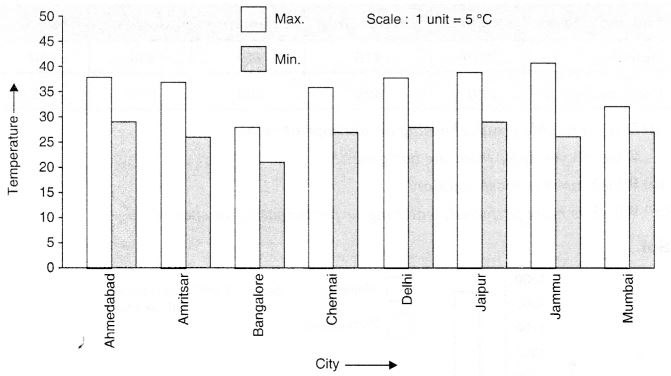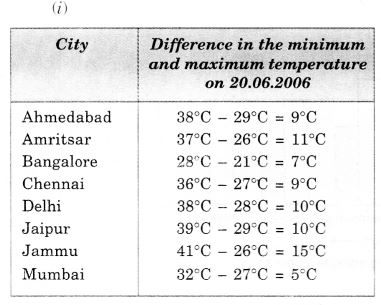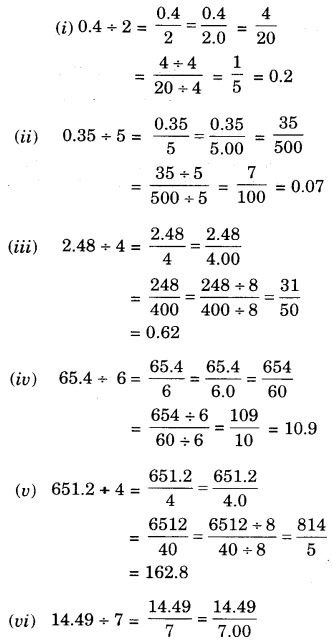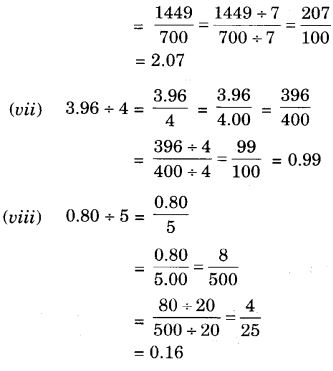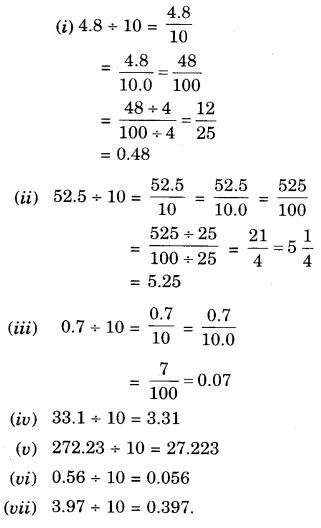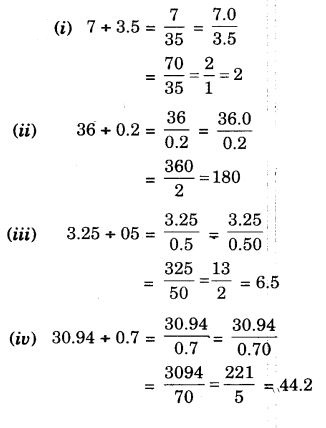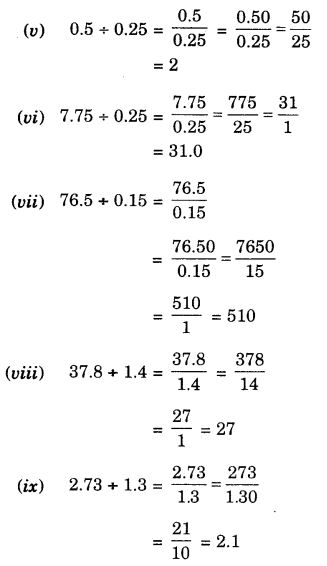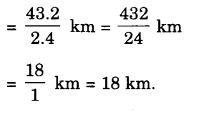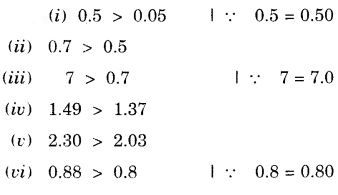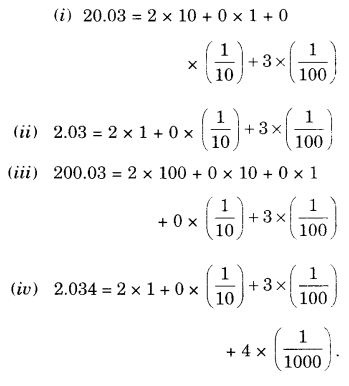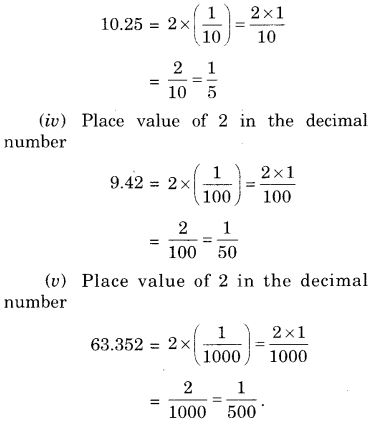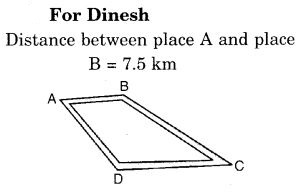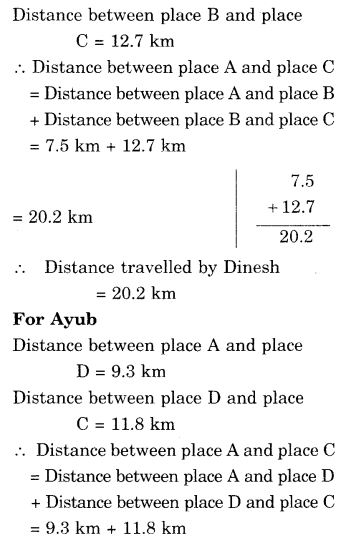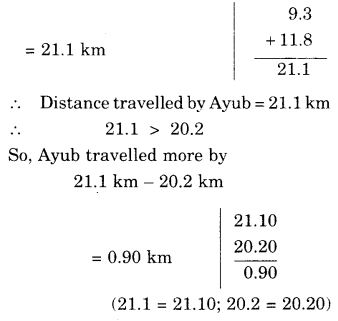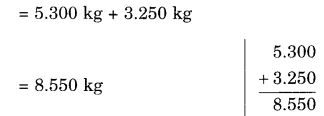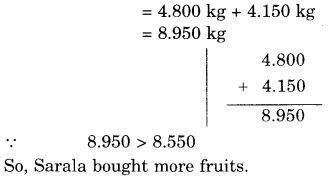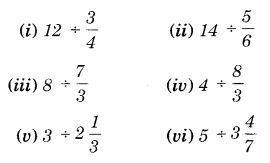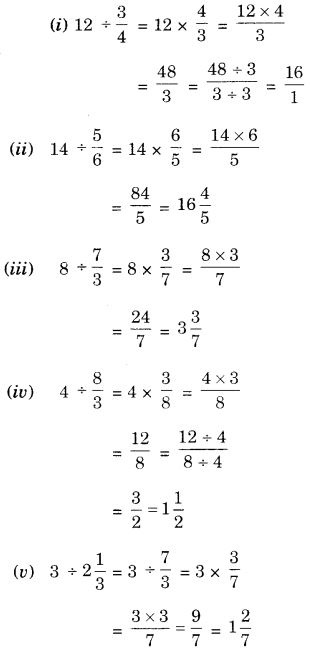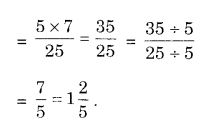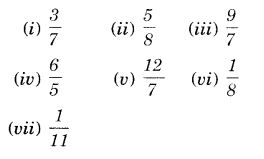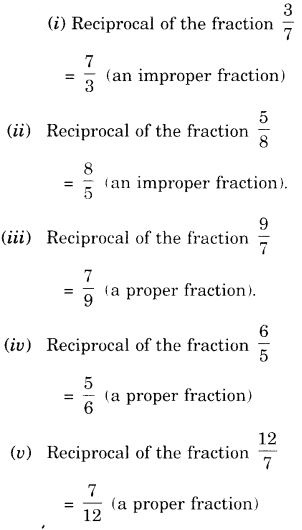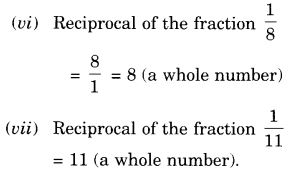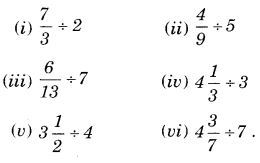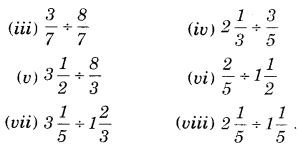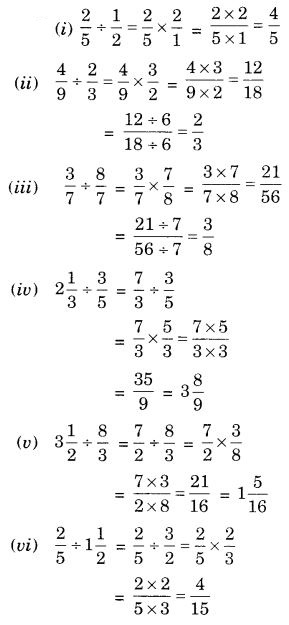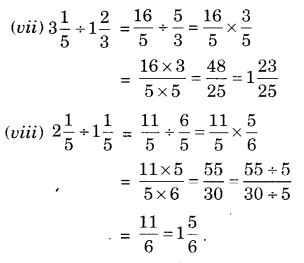NCERT Solutions for Class 7 Maths Chapter 4 Simple Equations Ex 4.3 are part of NCERT Solutions for Class 7 Maths. Here we have given NCERT Solutions for Class 7 Maths Chapter 4 Simple Equations Ex 4.3.
- Simple Equations Class 7 Ex 4.1
- Simple Equations Class 7 Ex 4.2
- Simple Equations Class 7 Ex 4.4
- Simple Equations Class 7 MCQ
| Board | CBSE |
| Textbook | NCERT |
| Class | Class 7 |
| Subject | Maths |
| Chapter | Chapter 4 |
| Chapter Name | Simple Equations |
| Exercise | Ex 4.3 |
| Number of Questions Solved | 4 |
| Category | NCERT Solutions |
NCERT Solutions for Class 7 Maths Chapter 4 Simple Equations Ex 4.3
Question 1.
Solve the following equations:
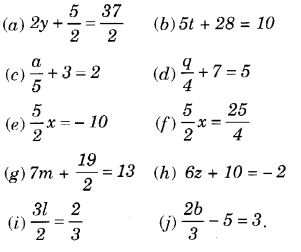
Solution:
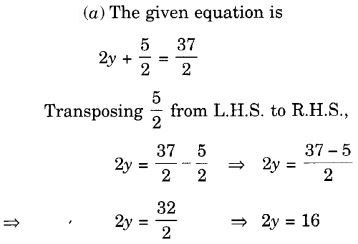
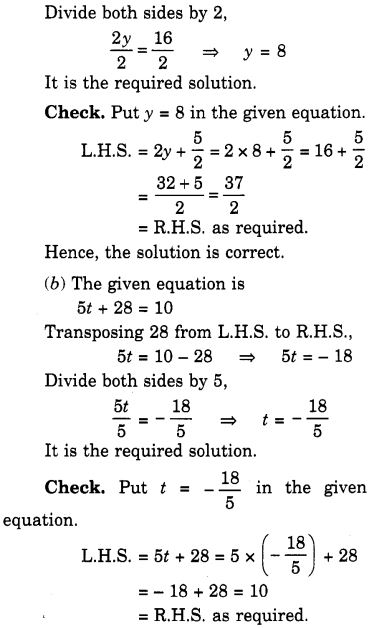
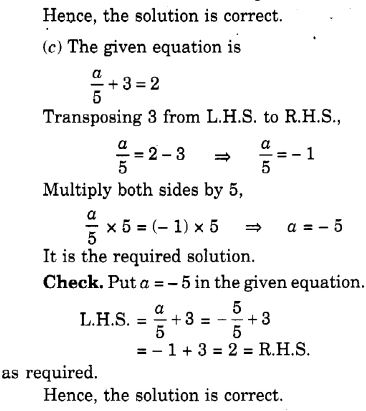
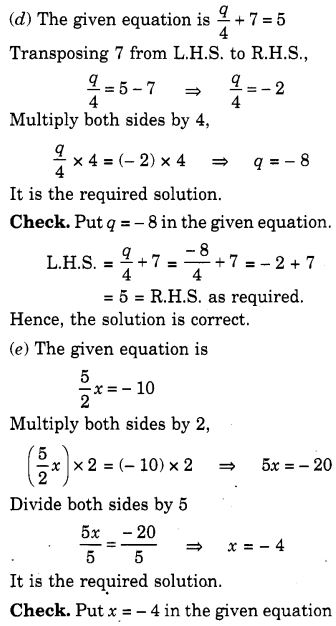
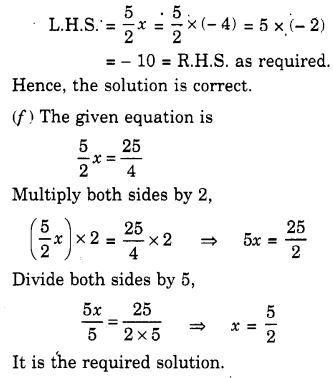
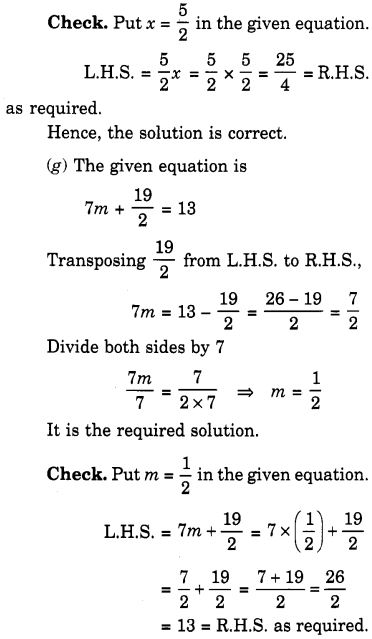
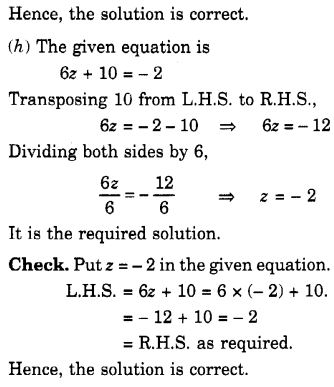
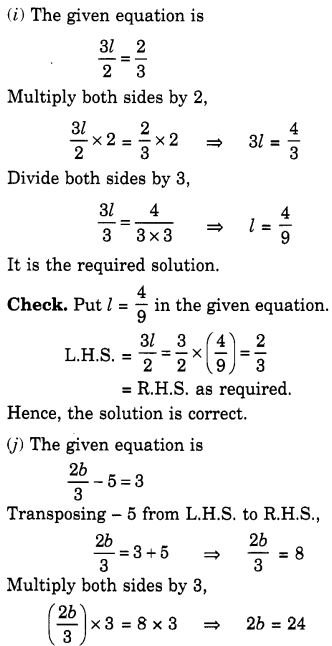
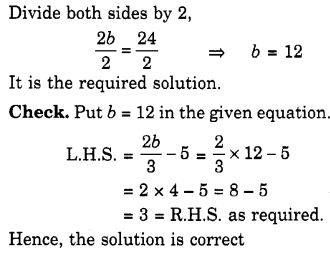
Question 2.
Solve the following equations:
(a) 2 (x + 4) = 12
(6) 3 (n – 5) = 21
(c) 3 (n – 5) = -21
(d) -4 (2 + x) = 8
(e) 4 (2 – x) = 8
Solution:
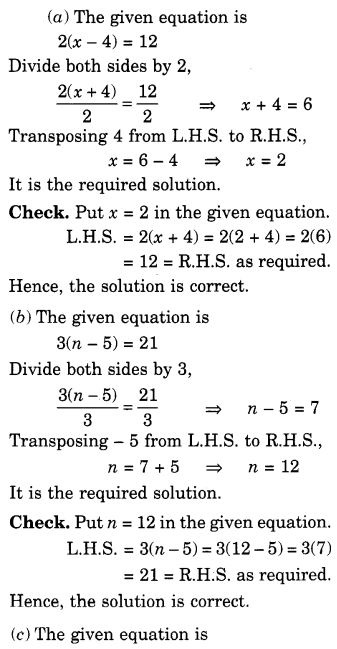
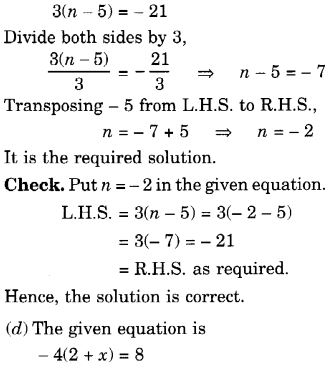
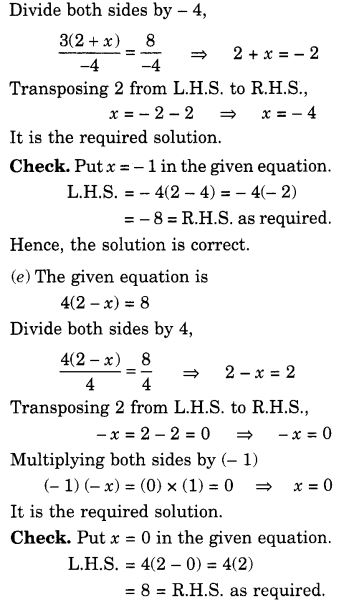
![]()
Question 3.
Solve the /bilowing equations:
(a) 4 = 5 (p – 2)
(b) -4 = 5 (p – 2)
(c) 16 = 4 + 3 (t + 2)
(d) 4 + 5 (p – 1) = 34
(e) 0 = 16 + 4 (m – 6)
Solution:
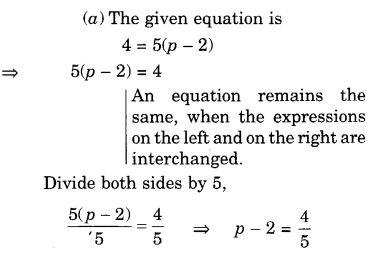
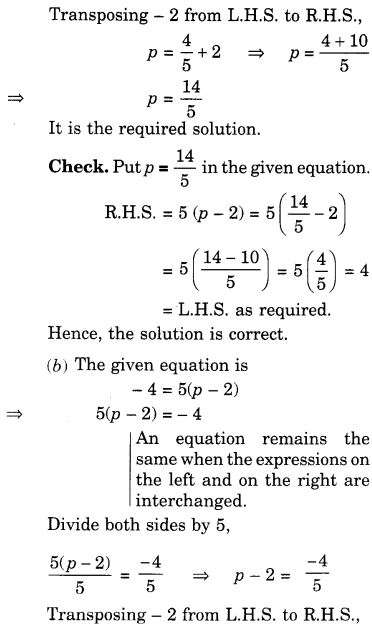
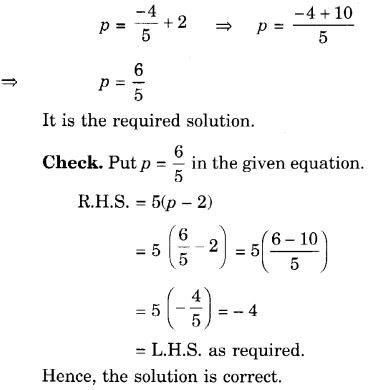
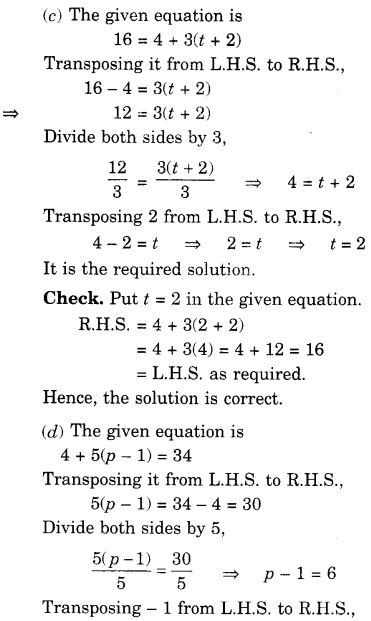
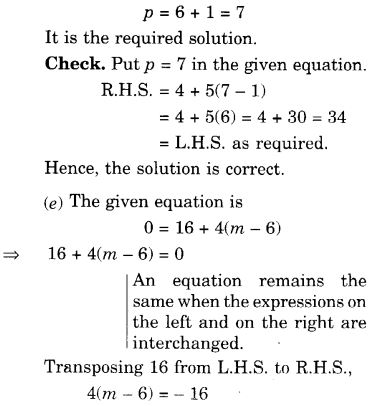
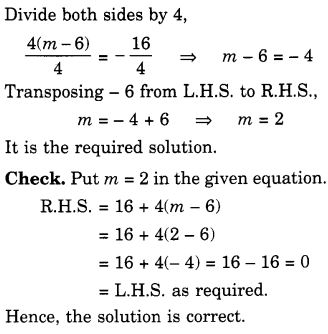
Question 4.
(a) Construct 3 equations starting with x = 2
(b) Construct 3 equations starting with x = – 2.
Solution:
(a) 1. Start with x = 2
Multiply both sides by 3, 3x = 6
Subtract 2 from both sides, 3x – 2 = 4 …(1)
2. Start with x = 2
Multiply both sides by 4, 4x = 8
Add 5 to both sides, 4x + 5 = 13 …(2)
3. Start with x = 2 Multiply both sides by 5 5x = 10
Subtract 1 from both sides, 5x – 1 = 9 …(3)
(b) First equation:
Start with x = -2
Multiply both sides by 2, 2x = -4
Subtract 3 from both sides, 2x – 3 = -7
Second equation:
Start with x = – 2
Multiply both sides by – 5, – 5x = 10
Add 10 to both sides, 10 – 5x = 20
Third equation:
Start with x = -2
Divide both sides by 2, \(\frac { x }{ 2 } \) = -1
Add 3 to both sides, \(\frac { x }{ 2 } \) + 3 = 2
We hope the NCERT Solutions for Class 7 Maths Chapter 4 Simple Equations Ex 4.3 help you. If you have any query regarding NCERT Solutions for Class 7 Maths Chapter 4 Simple Equations Ex 4.3, drop a comment below and we will get back to you at the earliest.
